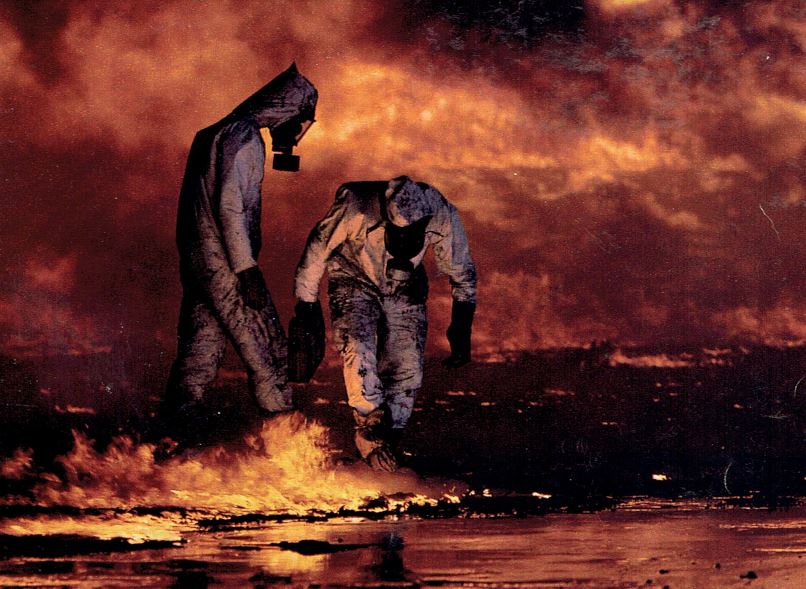ECO WARS KUWAIT
In 1991, Landsat captured the devastating environmental consequences of war. As Iraqi forces withdrew from Kuwait, they set fire to over 700 oil wells and damaged almost 75 more, which then spewed crude oil across the desert and into the Persian Gulf. Fires burned for ten months.
During the Arabian Gulf War of 1991, Michael Bailey and Planetviews team members faced explosive landmines and the chaos of war. Efforts were undertaken to obtain chemical samples from over 700 burning oil wells as part of the successful effort to extinguish the “Fires of Hell”.
Michael helped guide the supplying of food and water to war victims and refugees.
A photo of Michael and wildlife conservation associate Rick Thorpe graces the cover of the August 1991 edition National Geographic Magazine
Gulf War oil well fires in Kuwait created clouds of pollution, for which Rick and Michael spearheaded environmental protection and remediation efforts.
The Gulf was awash in poisonous smoke, soot and ash. Black rain fell. Lakes of oil were created.


As NASA wrote, “The sand and gravel on the land’s surface combined with oil and soot to form a layer of hardened ‘tarcrete’ over almost 5 percent of the country’s area.” Scores of livestock and other animals died from the oily mist, their lungs blackened by the liquid.
How do you stop an oil well fire?
Extinguishing the fires
1 Dousing with copious amounts of water.
2 Using a gas turbine to blast a fine mist of water at the base of the fire.
3 Using dynamite to “blow out” the fire by forcing the burning fuel and oxygen away from the fuel source.
4 Dry Chemical (mainly Purple K) can be used on small well fires.